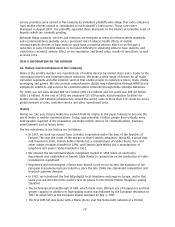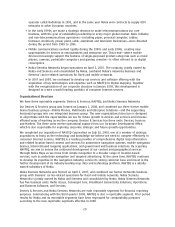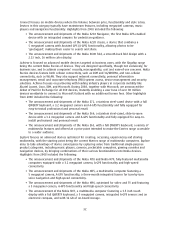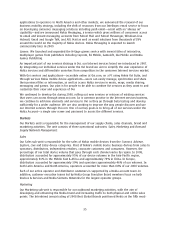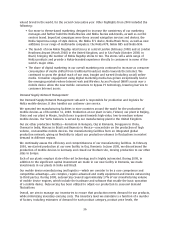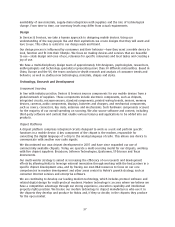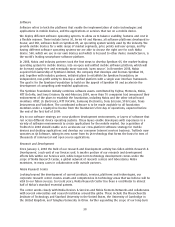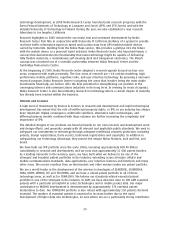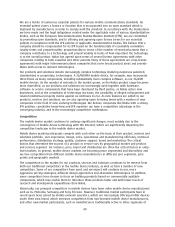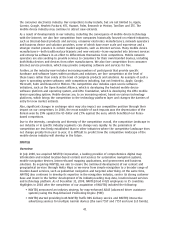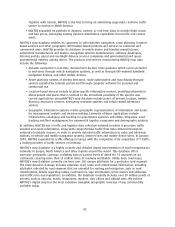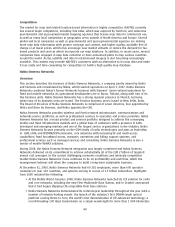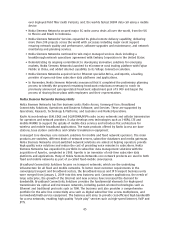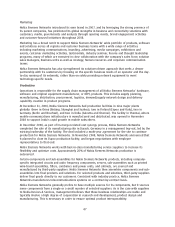Nokia 2008 Annual Report Download - page 38
Download and view the complete annual report
Please find page 38 of the 2008 Nokia annual report below. You can navigate through the pages in the report by either clicking on the pages listed below, or by using the keyword search tool below to find specific information within the annual report.availability of raw materials, supplychain integration with suppliers and the rate of technological
change. From time to time, our inventory levels may differ from actual requirements.
Design
In Devices & Services, we take a human approach to designing mobile devices. Using our
understanding of the way people live and their aspirations we create designs that they will want and
love to use. This ethos is central to our design work and brand.
Our design process is influenced by consumers and their behavior—how they want a mobile device to
look, function and fit into their lifestyle. We focus on making devices and services that are beautiful
to use—sleek design and ease of use, relevance for specific consumers and local tastes and creating a
joy of use.
We have a multidisciplinary design team of approximately 340 designers, psychologists, researchers,
anthropologists and technology specialists representing more than 30 different nationalities. Based in
China, Europe and the US, the team conducts indepth research and analysis of consumer trends and
behavior, as well as studies new technologies, materials, shapes and styles.
Technology, Research and Development
Component Sourcing
In line with industry practice, Devices & Services sources components for our mobile devices from a
global network of suppliers. These components include electronic components, such as chipsets,
integrated circuits, microprocessors, standard components, printed wiring boards, sensors, memory
devices, cameras, audio components, displays, batteries and chargers, and mechanical components,
such as covers, connectors, key mats, antennas and mechanisms. Such hardware components account
for the majority of our overall spending on sourcing. We also source software and content, including
thirdparty software and content that enable various features and applications to be added into our
products.
Chipset Platforms
A chipset platform comprises integrated circuits designed to work as a unit and perform specific
functions in a mobile device. A key component of the chipset is the modem, responsible for
converting the digital language of a chip to the analog language of radio. This allows one device to
communicate with another over radio signals.
We discontinued our own chipset development in 2007 and have since expanded our use of
commercially available chipsets. Today, we operate a multisourcing model for our chipsets, working
with five chipset suppliers: Broadcom, Infineon Technologies, Qualcomm, STEricsson and Texas
Instruments.
Our multivendor strategy is aimed at increasing the efficiency of our research and development
efforts by allowing Nokia to leverage external innovation through working with the best partner in a
specific chipset development area, and by freeing our own R&D resources to focus on our core
competencies in modem development and other areas central to Nokia’s growth strategy, such as
consumer Internet services and enterprise software.
We are continuing to develop our leading modem technology, which includes protocol software and
related digital design for multiprotocol modems. Modem technology is an area where we believe we
have a competitive advantage through our strong experience, execution capability and intellectual
property rights position. We license our modem technology to chipset manufacturers who use it in
the chipsets they develop and produce for Nokia and, if they so decide, in the chipsets they produce
for the open market.
37



